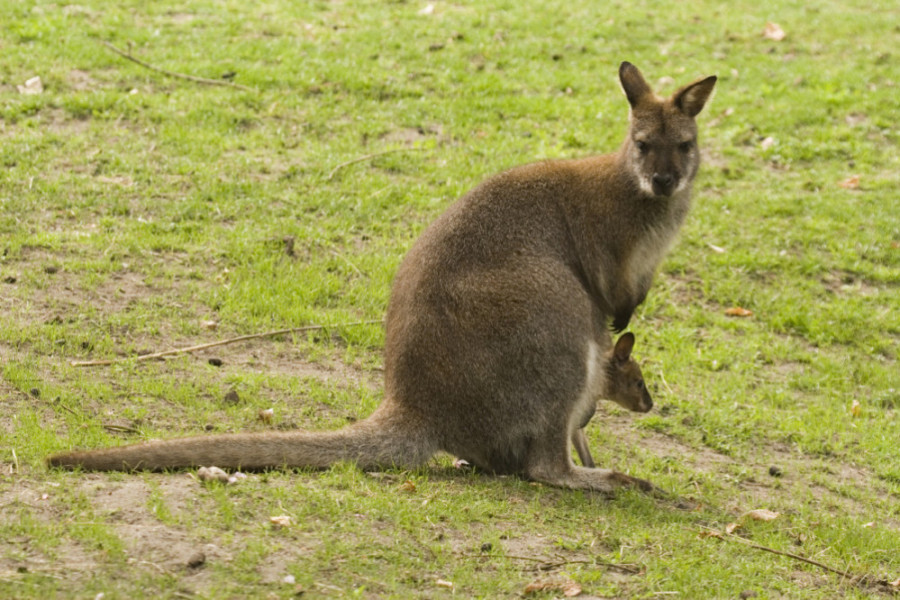Red-necked wallaby

Status
Non-native and localised
Population
Unknown
Scientific name
Macropus rufogriseus
The red-necked wallaby is closely related to kangaroos and look similar, although they are about half the size. British wallabies belong to a subspecies, Macropus rufogriseus rufogriseus, native to Tasmania, and escaped from private collections and zoos in the last century. They have greyish-brown fur and, as their name suggests, red patches on their shoulders. They stand on their powerful hind legs and support themselves with their strong black-tipped, silver-grey tail. Their ears, feet and muzzle also have black tips. Wallabies are usually solitary and active especially at dusk and during the night. They are not territorial and do not make dens, but during the day they will lie under cover in thick vegetation. They are generally secretive animals and are sensitive to disturbance.
Head-body length: 60 – 70cm
Tail length: 62 – 78cm
Weight: 7 – 22kg
Lifespan: Up to 18 years
Reproduction
Females can breed from the age of one. A single young is generally born during the summer and only emerges from the mother’s pouch in May or June the following year.
Diet
Mostly heather but also bracken, bilberries and grasses.
Habitat
Generally woodland and scrub, but feed out in the open, for example, on heather moorland.
Predators
The red-necked wallaby has no natural predators in the UK, but the young are sometimes killed by dogs or foxes.
Threats
Road traffic accidents. Harsh winters are also a cause of high mortality.
Status & conservation
Non-native and localised.
GB population size & distribution
The population of the red-necked wallaby in Great Britain is unknown. Established populations exist, in Scotland and on the Isle of Man (where there are an estimated 1740 wallabies). A colony in the Peak District (Derbyshire) is now thought to be extinct, as no individuals have been seen since 2000.
Did you know?
When alarmed, wallabies (like rabbits) slap their feet on the ground for several bounds, warning others of potential danger.
